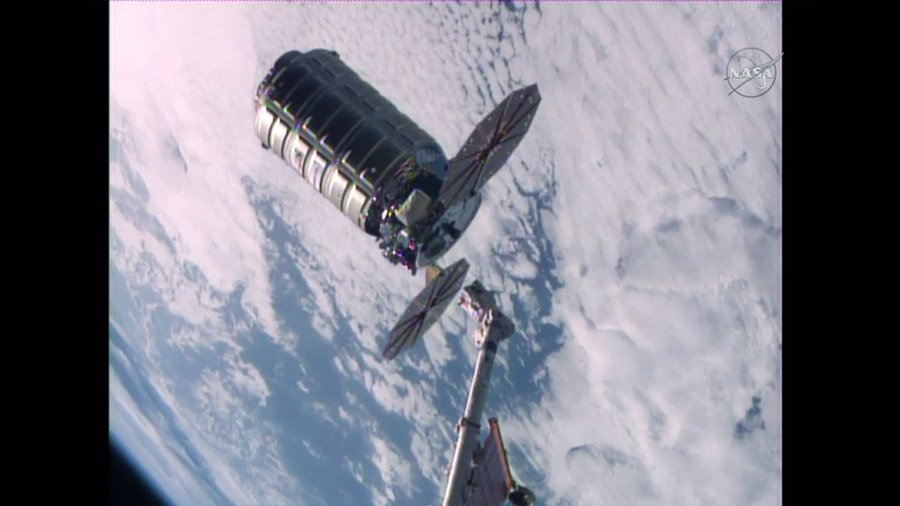The latest set of space-fire experiments has blazed up aboard the private Cygnus cargo spacecraft.
Mission controllers on the ground ignited NASA's Spacecraft Fire Experiment II (Saffire-II) today (Nov. 21), shortly after the uncrewed Cygnus departed the International Space Station (ISS) following a monthlong stay.
The three-part Saffire program is investigating how fires spread in microgravity and aims to help researchers design safer spacecraft down the road. Saffire-I burned a piece of cotton-fiberglass cloth 1.3 feet wide by 3.3 feet long (0.4 by 1 meter) on June 14 aboard a different Cygnus, in what NASA officials described as the largest fire ever intentionally set in space.
Saffire-II adds to the data by igniting a variety of different materials, NASA officials said.
"The nine samples in the experiment kit include a cotton-fiberglass blend, Nomex and the same acrylic glass that is used for spacecraft windows," they wrote in a description of Saffire-II.
Saffire-II's samples are relatively small; each measures 2 inches wide by 12 inches long (5 by 30 centimeters). The final set of experiments, Saffire-III, will ignite a large-scale fire, similar to the one lit during Saffire-I, when its time comes during a future mission, NASA officials said.
All three Saffire experiments fly aboard the robotic Cygnus vehicle, which is built by Virginia-based aerospace company Orbital ATK.
Get the Space.com Newsletter
Breaking space news, the latest updates on rocket launches, skywatching events and more!

This particular Cygnus arrived at the ISS on Oct. 23, loaded up with a variety of supplies, hardware and science gear. The spacecraft departed today and is scheduled to remain in orbit until Sunday (Nov. 27), when it will be steered toward a fiery death in Earth's atmosphere. (Unlike SpaceX's Dragon cargo capsule, Cygnus is designed to be disposable.)
The Saffire program is managed by NASA's Advanced Exploration Systems division.
Follow Mike Wall on Twitter @michaeldwall and Google+. Follow us @Spacedotcom, Facebook or Google+. Originally published on Space.com.
Join our Space Forums to keep talking space on the latest missions, night sky and more! And if you have a news tip, correction or comment, let us know at: community@space.com.

Michael Wall is a Senior Space Writer with Space.com and joined the team in 2010. He primarily covers exoplanets, spaceflight and military space, but has been known to dabble in the space art beat. His book about the search for alien life, "Out There," was published on Nov. 13, 2018. Before becoming a science writer, Michael worked as a herpetologist and wildlife biologist. He has a Ph.D. in evolutionary biology from the University of Sydney, Australia, a bachelor's degree from the University of Arizona, and a graduate certificate in science writing from the University of California, Santa Cruz. To find out what his latest project is, you can follow Michael on Twitter.









